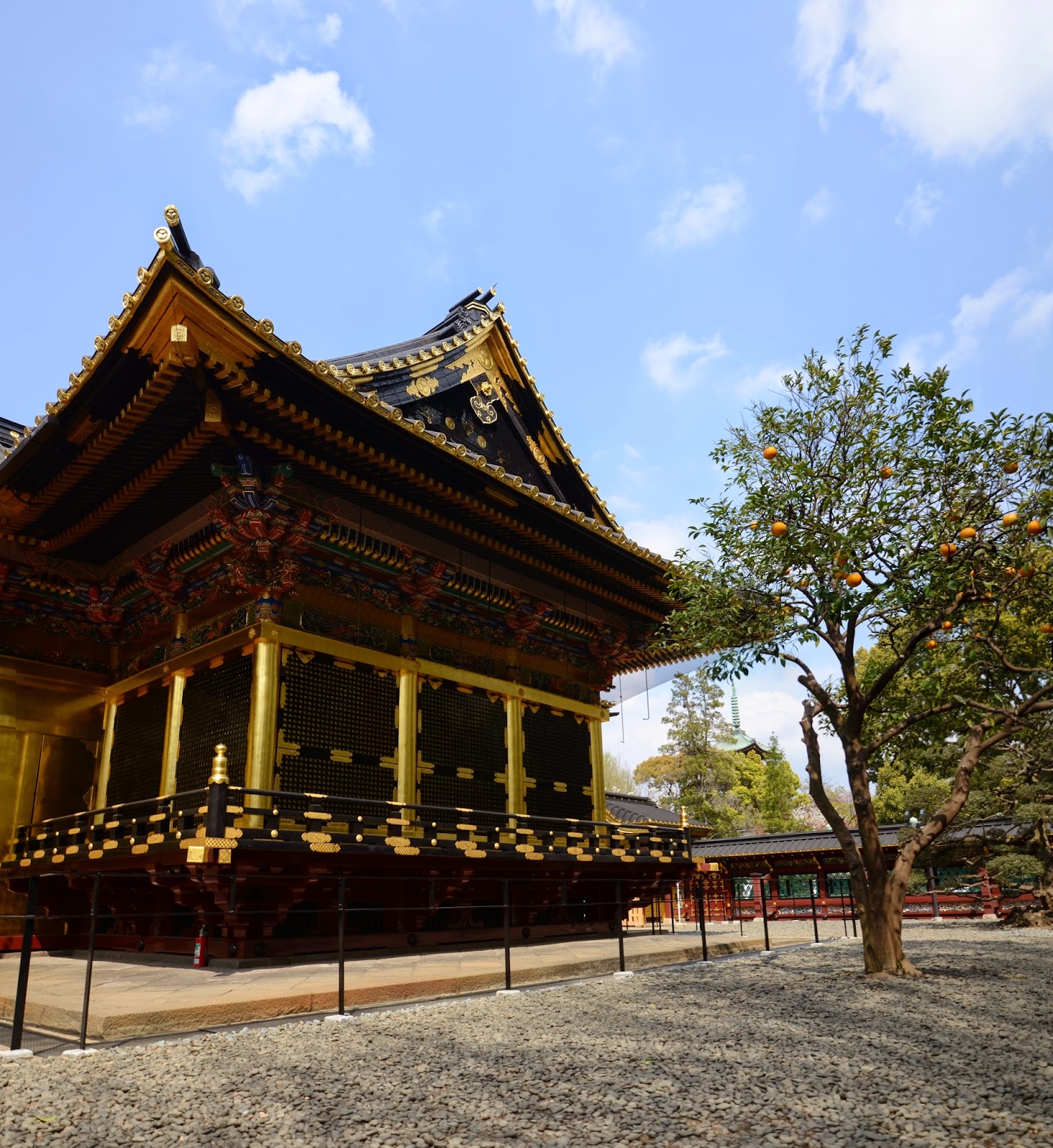Wednesday was a lot more than I expected it to be.
My guidebook said Ueno park was an absolute must see, and
said there were free walking tours every MWF at 10:30. I was just expecting
another pretty park, but I love walking tours of all flavors, so I decided to
give it a go.
When I got there, I realized that Ueno Park was a ‘park’ in
the same sense that Central Park in New York is. It’s only about half as big,
but it’s got a zoo, the Tokyo National Museum, a half-dozen other museums, and
a big handful of Shinto shrines and Buddhist temples, on top of being lined
with the (now obligatory) cherry trees.
I got there and found the tour, which was led by a nice
Japanese lady whose name I just realized I have
 |
| Our guide. |
 |
| Rinnoji temple |
Explanation complete, our guide took us by a few of the
museums (including the science museum, which had a life-size model of a blue
whale just chilling out front), then to a Buddhist temple at the northeast
corner of the park, called Rinnoji temple. Our guide showed us how to cleanse
ourselves at the temple well before approaching (left hand, right hand, tough
water to your mouth), then how to ring the bell to make a prayer. She also showed
us the wall of votive prayer tablets you see at pretty much every temple and
shrine here. People buy a tablet with a certain image on it, write their prayer
or wish on the back, then tie it to the wall. Rinnoji used to be where people
would make a donation of a horse for major life events, so its tablets had a
picture of running horses.
 |
| Tosho-gu shrine |
After that, we wandered up the east side of the park, past
the National museum, then went to the Tosho-gu
shrine to the Tokugawa family (which
controlled the shogunate during most of Japan’s feudal age). I came back later
to look around more, but before that we went back to the center of the park to
see a few more temples and shrines (see my flickr for photos) and the head of
the Ueno Daibutsu (‘great Buddha statue’) which was destroyed in an early 20th
century earthquake.
When our guide left, I went back to a grilled eel restaurant
we passed earlier and got a bit of a surprise. When I walked in, I was asked to
remove my shoes, then led to a room with straw mats and cusions on the floor in
front of calf-height tables. A bit more formal than I expected, to say the
least. The grilled eel and rice was still tasty though, so no complaints here.
 |
| Room where I had lunch. |
After that, I went back through a few temples and shrines to
get more photos, then went up to the Tokyo National Museum. They had a special
exhibition on the art of one of Kyoto’s biggest Buddhist temples, which was
pretty cool, but let’s be honest: I just wanted to see some samurai swords. The
museum had several, including some of the earliest examples of the curved
swords, called ‘tachi,’ as well as several katanas and tantos. I grew out of my
‘OMG samurai are the coolest’ phase a while ago, but my inner teenage boy was
still a little giddy seeing them. It’s really weird seeing a sword that’s 1000
years old, and not only still sharp, but still looks just as it did the day it
was forged, from the shallow groove on the back of the sword to the smooth
curve from hilt to tip. Most of the swords were designated as ‘Important
cultural properties,’ but a couple were marked as ‘National Treasures,’ meaning
that if you bring it into the country, it will be confiscated as property of
the government, no questions asked.
After that, I wandered the tea houses and gardens behind the
museum, then went home and grabbed dinner at a yakitori bar near my hotel,
where I got grilled chicken and something else which I (yet again) have no idea
what it was.
 |
| What's this? Your guess is as good as mine. |

No comments:
Post a Comment